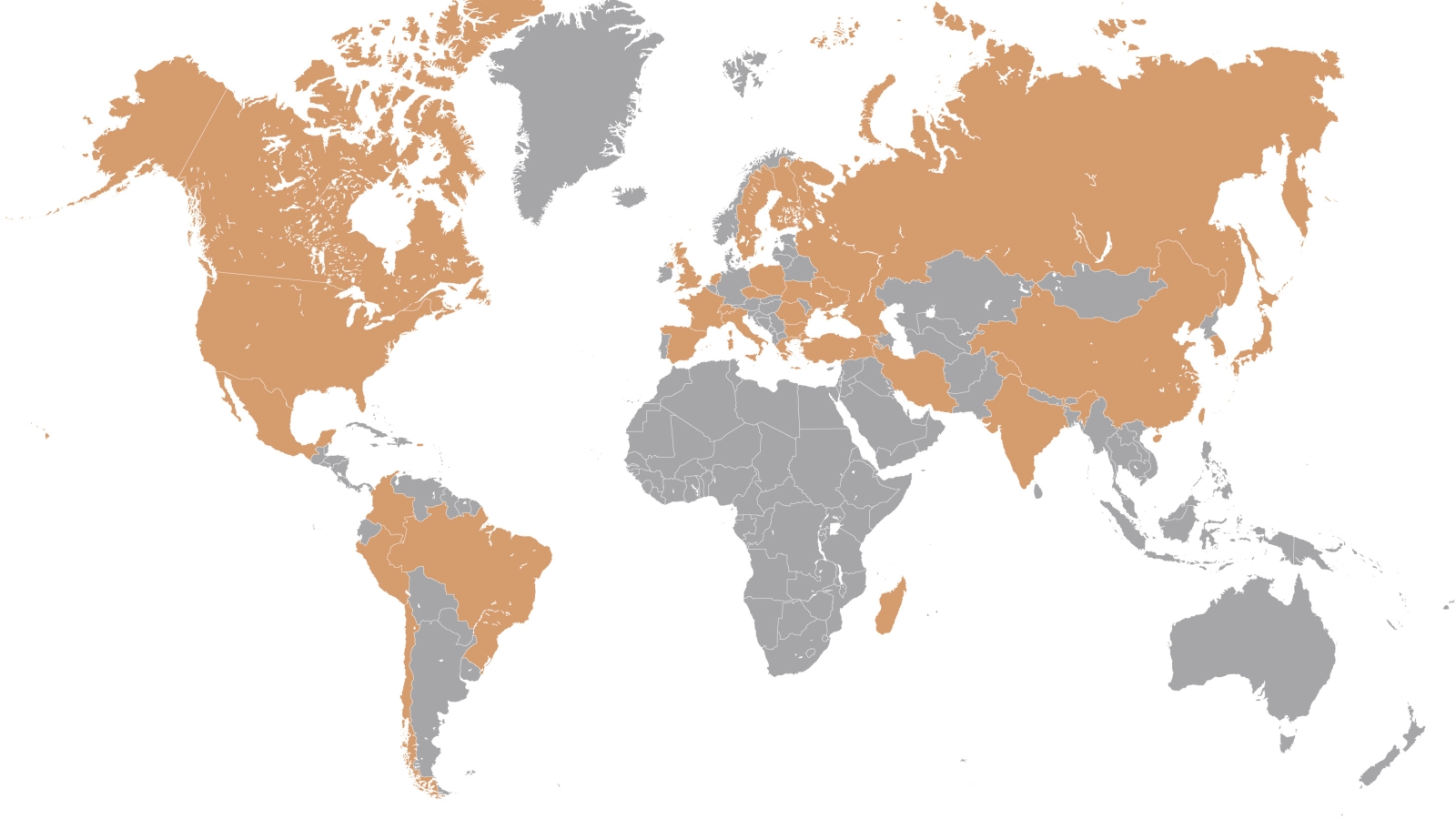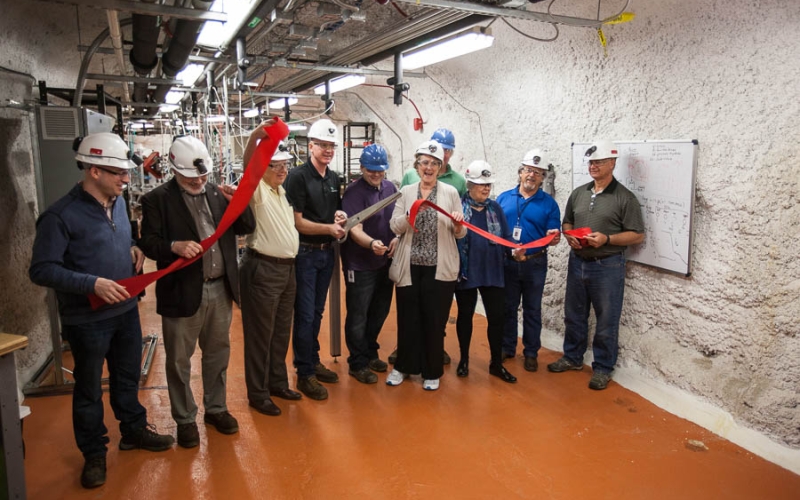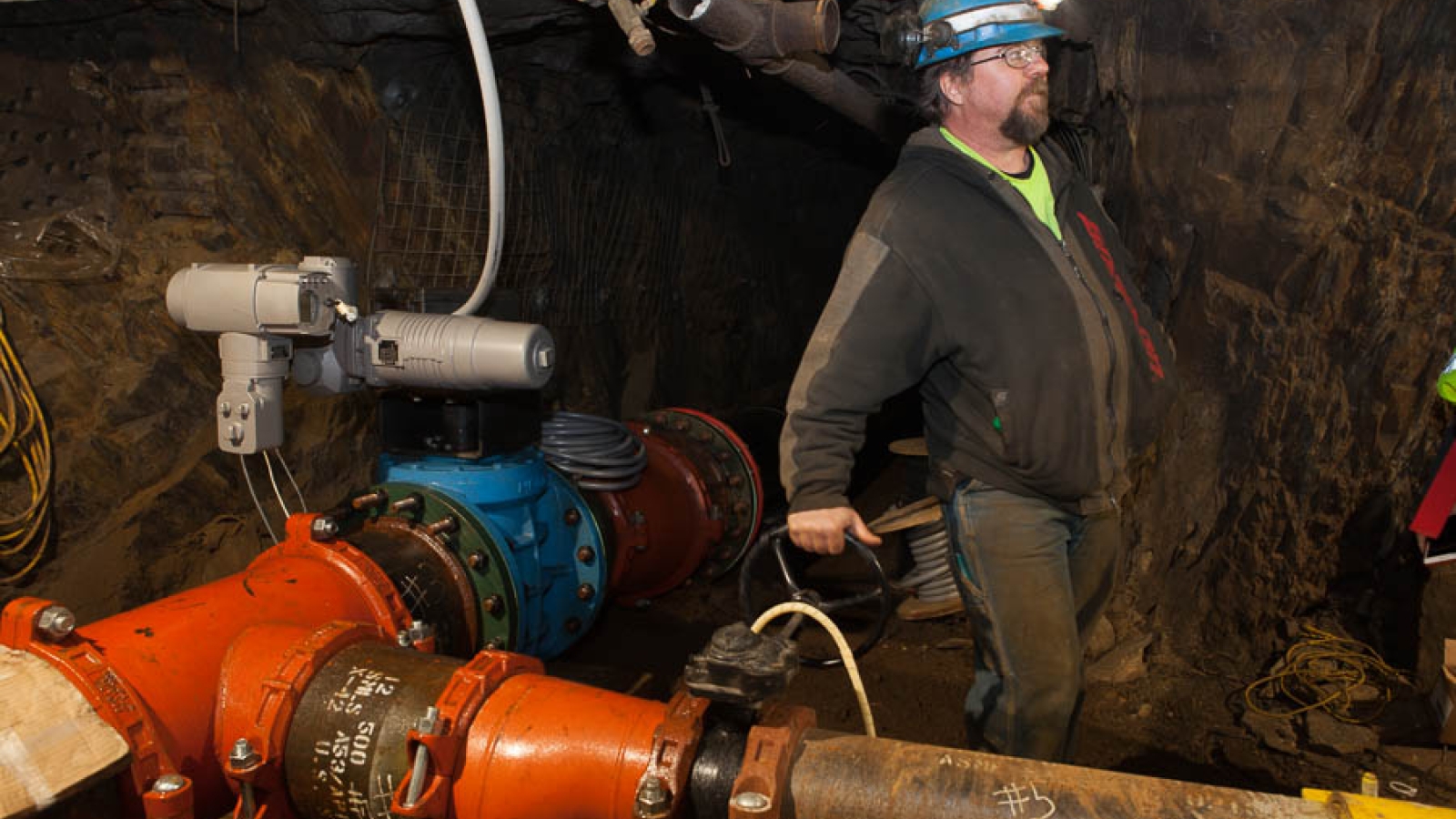2017 has been an exciting year at Sanford Lab. We’ve seen tremendous progress on current and future experiments, including dark matter and neutrino research; the ongoing efforts of the Black Hills Underground Campus; Education and Outreach; and the Ross Shaft rehabilitation project, which reached the 4850 Level in October. Underpinning the success of our projects is our continued commitment to safety at Sanford Lab. I am so proud of our staff, researchers and contractors for their focus on safety every day.
The success of 2017 is directly related to our strong partnerships with many organizations, including the various science collaborations at Sanford Lab; Fermilab, which has oversight responsibilities for our operations activities for the Department of Energy and is the lead DOE laboratory for the Long-Baseline Neutrino Facility and Deep Underground Neutrino Experiment (LBNF/DUNE) project; and Lawrence Berkeley National Laboratory. I also want to thank the State of South Dakota and the SDSTA Board of Directors for their strong support of the world-leading underground science at Sanford Lab.
CM/GC selected: On Aug. 9, a new team officially signed on to help prepare for the excavation and construction of LBNF. Fermi Research Alliance LLC, which operates Fermilab, awarded Kiewit/Alberici Joint Venture (KAJV) a contract to begin laying the groundwork for the excavation for LBNF, the facility that will support DUNE. KAJV will help finalize design and excavation plans for LBNF and oversee the excavation and removal of more than 800,000 tons of rock, as well as the outfitting of the DUNE caverns.
In the 2016-2017 school year, our E&O team reached 12,500 students.
In 2015, our Education and Outreach team introduced K-12 students and teachers to an array of new curriculum units and assembly presentations, all of which are based on the science at Sanford Lab, to schools throughout South Dakota.
Number of students reached since the new programs were introduced.
Our E&O team also hosts field trips with hands-on activities and facilitates teacher workshops. Their hard work and dedication to STEM education is making a big difference for students and teachers across South Dakota. And we couldn’t be happier with the results.
I want to end by expressing our sincere thanks to T. Denny Sanford whose vision and generosity spurred the creation of this facility. I am also grateful for the financial support from the State of South Dakota, the Department of Energy and Fermilab.
Main image contributed by Reader Hahn of Fermilab; other images contributed by Sanford Lab.











